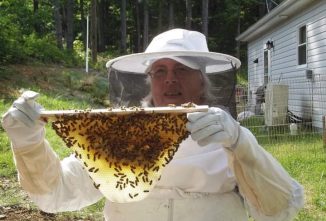Featured Stories
The Vital Role the Drone Plays in the Beehive
The most sustainable manner of keeping bees requires Beekeepers to learn skills beyond hive inspection, feeding regimens, and pest control. Learning to create splits and raise queens are, without a doubt, the most sustainable manner of reducing costs.
Read MoreStrange Creatures
What about all those strange creatures lurking about the bee yard? Here’s a little primer on which creatures to keep a watch out for.
Read MoreSuccession Planting With the Best Plants for Bees
One of the ways we help is by succession planting for bees and other pollinators and learning what are the best plants for bees.
Read MoreDisability and Beekeeping
While we may not think of beekeeping as a strenuous activity, it does require a certain degree of fitness and mobility. The amount of lifting, turning, and bending may seem small, but it can seem overwhelming if you have mobility, dexterity, or balance problems.
Read MoreWhat do Mason Bees Pollinate?
Most Osmia mason bees are generalist pollinators, foraging on a wide variety of plants. As a rule of thumb, Osmia prefer tube-shaped blossoms or flowers with irregular shapes. Some of their favorites are various mints, penstemon, scorpionweed, and willows. They also like legume family plants such as indigo bush, clover, and vetch along with composites such as thistles.
Read MoreWhat’s in Your Beekeeping Smoker?
Add to Favorites When our son first started keeping bees I had no idea what a beekeeping smoker was used for or what to put in the smoker. The smoker …
Read MoreHow to Manage Ants in a Beehive
There is nothing quite like the sights and sounds of bees buzzing around, gathering pollen and nectar on a warm summer day. Summer and bees just seem to go together; unfortunately, so do summer and pests.
Read MoreHow Often Should I Test for Varroa Mites?
It’s hard to recommend a schedule because the rate of reinfestation will vary depending on the number of hives—both managed and feral.
Read MoreWhat You Can Learn from the Beehive Entrance
There are many things you can learn about your hive just by watching the beehive entrance and the environment around the beehive.
Read More














